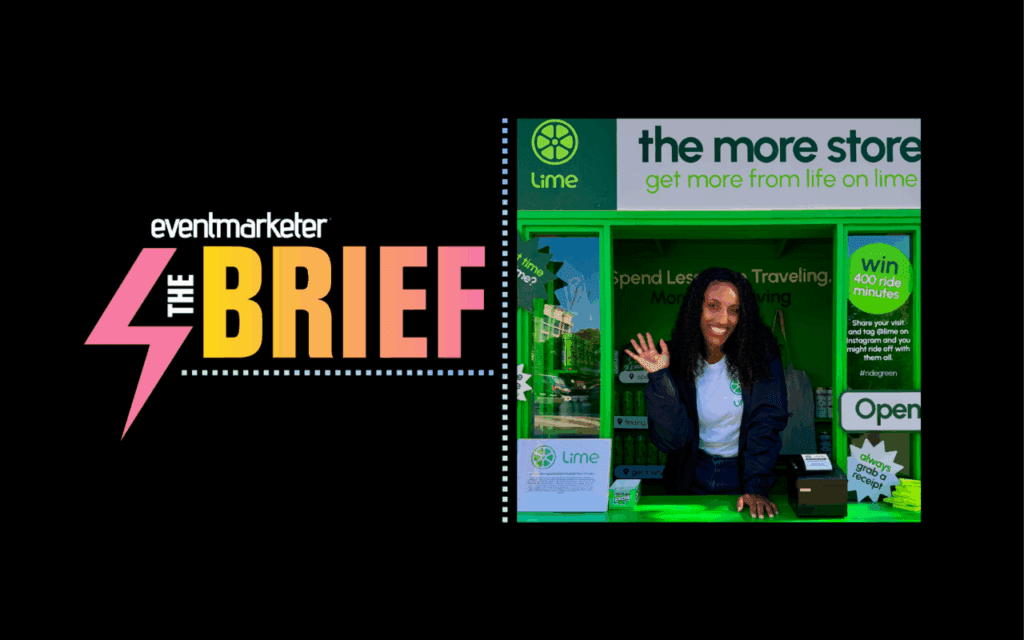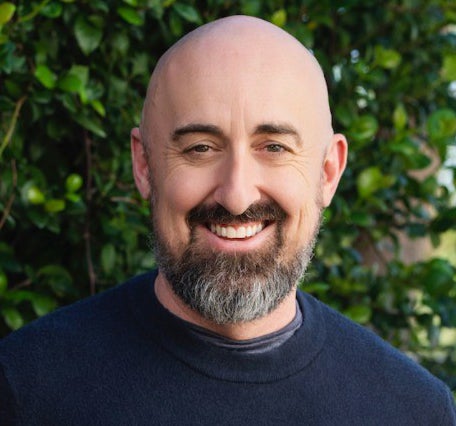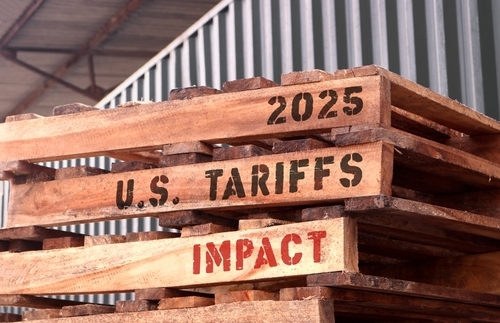Editor’s Note: For Chief Marketer’s monthly Marketers on Fire series, we interviewed Cisco SVP and CMO Carrie Palin to discuss the company’s recent Cisco Live conference, the brand’s involvement with women’s sports, AI use cases, B2B thought leadership and more. Above is a video clip of the conversation, and below is the transcript of the full interview.
Kaylee Hultgren, Content Director, Chief Marketer: Many of you are likely familiar with our monthly Marketers on Fire series, which features marketers moving the needle for their brands and the industry. Today I’m joined by Carrie Palin, Senior Vice President and Chief Marketing Officer at Cisco, who we’re recognizing as this month’s Marketer on Fire.
Before joining Cisco in 2021 she was the CMO of Splunk, which was acquired by Cisco last year. Prior to that she served as CMO at SendGrid, which was acquired by Twilio, and she was the first CMO at Box. She was also Vice President of Marketing at IBM’s Cloud Data Services and Analytics division and began her career at the marketing team at Dell. Carrie, thanks so much for joining me today.
You are fresh off of Cisco Live, the brand’s annual networking customer and education event that happened in San Diego very recently. What were your top marketing takeaways from the conference?
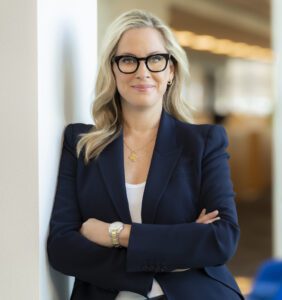
Carrie Palin, SVP and CMO, Cisco: So we have an annual event that is in the United States that is our largest event, and then we do a regional event … But I would say this year we held it in San Diego for the first time in quite a while and we had amazing attendance. The thing that I love about Cisco Live is there’s so much education and certification and community that every year, no matter what’s going on in the world, we continue to get more customers and partners to the event … We were worried this year a little bit just because of the macroeconomic environment. Are people going to actually come? And as it turns out we had close to 23,000 people at the event, which was equal to or better than last year in Las Vegas. So I think people are hungry for a lot of innovation.
And I think for us this was a year with a massive payload on announcements on new innovation in our portfolio, so that always helps the marketing job, right? When you have a lot to talk about and you’ve got a new Chief Product Officer in the last year who is incredibly dynamic in driving amazing really fast innovation cycles. So there’s a lot of innovation coming out of Cisco in the last year, plus folks are aching to be a part of that. So it makes our jobs easier.
But on the flip side I will say what marketing also has to think about on top of the messages is the experience for those attendees because they have choices to go to all sorts of partner and customer events. And we want them to choose our event and want to choose Cisco and keep returning to be with us and communing. So we take very seriously the experience from the moment they step off the plane in San Diego until they leave.
KH: So let’s move on to some of your recent initiatives, things that are important to Cisco right now. A big area of focus for you is women’s sports, specifically F1, which is hugely popular at the moment. Tell me about Cisco’s F1 Academy sponsorship and McLaren’s Next Program. What are they accomplishing from a brand perspective and how does this relate to Cisco’s purpose-driven marketing approach?
CP: We take our brand very seriously at Cisco. I mean we’ll talk about that later I think but our brand is associated with things like trust and integrity. And so when we think about partnering we look at that as far as culture and purpose for our partners and McLaren … Early on we’re looking for an F1 as a potential partner but they also use Cisco technology end-to-end at the time. So they use our security portfolio. our observability portfolio with Splunk, our networking, our Webex product, that they use to communicate from the track to headquarters. And so we partnered with them overall just because their culture and their team identity very much aligned with our values.
Now past that Cisco was sort of a middle of the grid team that is now leading the Formula 1 Championship Series, but they also were one of the first teams to sign up for the Formula 1 Academy with Susie Wolff who is leading that. And we were the first named sponsor to sign up to sponsor the women in that academy and specifically the first driver Bianca Bustamante for Cisco and McLaren and then now this year Ella Lloyd.
We love this because this is a sport dominated mostly by men historically but there are incredibly talented women out there who need the sponsorship, need the opportunity and need the training in the right tracks and circuits. And Susie Wolff is putting this together and we were aching to be one of the very first to sign up to say “We’re getting behind this and we’re getting behind these young ladies.” And it’s not just about the driving. There’s also a ton of education for them on how to be leaders, how to manage press, how to take their careers off the track as well, and that’s something that we believe in entirely
KH: And you’re passionate about women’s sports yourself, right? That’s part of your history.
CP: Yes I am. My husband and I have two children, one is a daughter who … her whole identity is sport. My husband played college basketball. And so we have tall, athletic kids who love sport and it’s part of who they are, but our daughter in particular. And so I think about what is the future for her and her cohort and young ladies today. And so I’ve gotten very involved with my alma mater and their basketball team there which made the Elite 8 this last year in basketball for the first time. And so seeing big milestones being crushed by young women who have this incredible athletic talent but are also incredible humans, and how do we continue to drive equity in sports so that more young ladies have an opportunity to advance through college and after? It’s something we care about. And the workforce is equally women to men for the most part and we want that to be represented in athletes as well and be a part of their story to help their success.
KH: So you are the former CMO of Splunk, and Splunk was acquired by Cisco last year with a $28 billion acquisition. It’s a cybersecurity and analytics company, so I wanted to see: In what ways has it evolved the Cisco brand and how has the integration changed the company now that we’re about a year in?
CP: Great question. So Splunk sits squarely in two categories that were very important to us, cybersecurity and observability, both of which Cisco also sold. But their technologies really filled out our portfolio in a way that we could service our customers holistically across those categories, which was it really enabled us to tell this new story that we have in market which knits all of Cisco’s portfolio together in a way. Internally we call it One Cisco but it’s really talking about the power of the entire platform. Because when cybersecurity and networking and observability come together it’s magical, and we’re the only company that can do that. Which means you are the most protected. You can be moving your data across networks—and all companies do that, all organizations do that—you want to do it safely, securely.
But then the observability piece allows you to see around corners, and if a cyberattack happens or if there are issues you are up and running much more quickly because Splunk is best-in-class at that. So we bring all this protection, this connection protection and then this ability to see around corners into one platform. And then you add in all of the AI innovation and we are sort of one amongst one these days in how we can service the wholesale needs of our customers for their critical infrastructure in the AI era. And that’s the story we’re telling. And you’re going to see the evolution of our brand mimic that. Our color palettes are evolving to include Splunk’s pink and orange and a few other things, but you’ll see a lot coming from us in the next year that’s going to be telling that portfolio story end to end.
KH: Following up a little bit on AI and marketing generally. What are Cisco’s most significant use cases at the moment? I know you’ve used AI forever but if you could talk a little bit about how you see that evolving and both for internal purposes and also customer-facing AI applications.
CP: A few things. We have a new board member at Cisco that just got announced in the last two months and he’s the Chief Product Officer at OpenAI. We’ve been working a ton with OpenAI. We have a ton of innovation going on there together where some of the newer and bigger platforms that are helping drive roadmaps together with them which is really exciting. Also with Nvidia who’s one of the big silicon manufacturers in the AI era. And then we also have our own silicon which we don’t talk about enough at Cisco. But because of that we have become very ingrained in some of the big hyperscalers who have the big public clouds. Their infrastructure is being fueled by Cisco.
I’ll go back to McLaren—there is no tougher use case. They move their data center 25 times a year around the globe to some of the most intense climates on the planet … Literally their data center sits in their garage at the F1 race. Usually it’s so hot, it’s really tough, and they need millisecond-level information that they can then communicate back to England where they have their headquarters and their data scientists, and they’re communicating with guys who are driving 200 miles an hour around a track. And those little tweaks from the data they get off of the car and their communication back to headquarters actually are the difference in success or not success. And so it’s been really fun to see. They use all of our portfolio. They are one Cisco case study but they’re one of the most extreme case studies, and yet we keep expanding the partnership because the technology is working for them and it’s fun to see that success and be a very small part of that story.
But yes we’ve got use cases all over the place, and I think the thing that makes me most proud is that in some of the toughest industries on the planet that need the highest levels of regulatory help and security and cyber they all come to Cisco and rely on us … And that to me is where Cisco builds our foundation and our reputation for being that trusted partner.
KH: Are there certain aspects of the business where you’re using AI more now, regarding use cases?
CP: We’re using it everywhere, and it’s a corporate mandate and has been. I mean we’re a technology company so if we aren’t on the leading edge of utilizing AI to provide faster better smarter capabilities for our customers we’re missing it, right? And so early on we said “We’re going to do that,” but we also said, “We’re going to do this in a responsible way.” Because we understand that being on the leading edge you have to be very thoughtful about the security and the integrity of AI.
We have someone inside of our company, our Chief Operations Officer, leading those initiatives but each of our ELT members including myself have our teams eyeball deep in testing, looking at it. So my team, for instance, has been using AI for many years now and some of it was sort of foundational AI before we had LLMs and now agentic AI, where I’m seeing it make a huge difference. And we are a global company. We have 90-plus thousand employees but we still only had the ability to translate everything that Cisco does into possibly five or six languages on our best years, right? … And now we can have real-time language translation. So if we have a sales rep that’s picking up a text from someone on our website in a chat that happens to sit in Hungary and would prefer to speak in Hungarian, we can do that real-time. And we can provide a really informative customer experience because of agentic AI and our sales reps working together.
We are exploring ways to have real-time information so you don’t have to say “Hey can I get my technical expert on the phone?” Instead you have Agentic AI serving as that technical expert. So that customer [that] gets on their first touch call to Cisco gets really deep technical information while they’re on the call with somebody who might be just one or two years out of undergrad, and it’s a more wholesale experience for them that gets to their needs quickly and easily and in almost every language on the globe now, which to me, bridging that digital divide by using AI to do that is somewhat miraculous and really cool.
KH: Let’s talk a little bit about trust. It’s a major topic of conversation at the moment in marketing and building trust is critical for B2B in particular. So in your view how do you actually do it in practice? What is Cisco’s strategy?
CP: There is no better endorsement of a company and their brand and trust than others talking about it, right? I mean we can talk about it all day long, that’s what we built our brand on. But to hear customers who have relied on Cisco forever and they stick with us through good times and bad … when our portfolio is at a high when our portfolio is just competitive. Because technology goes through cycles … and to have customers that have been with us for decades for a reason, and those who have recently moved to Cisco from other competitors because of that trust, telling our story through their story is the most compelling thing we can do. Whether it be on digital communities where customers exchange ideas and fostering that where we are not present and letting them just talk about their experience, or taking stories into our big customer events, our ad campaigns and what have you. And there’s nothing more powerful than that.
I would say the one that came to mind most for me is a year ago at Cisco Live we had the Chief Security Officer for the NFL and we are their cybersecurity partner. And I thought she was going to talk about fan experience. And she said “Hey a year ago we had a gentleman who was an NFL player have a heart issue on the field.” I don’t know if you remember that, I won’t mention his name, but it was all over the press. And she said that was a Cisco stadium where basically all the infrastructure was there. And she said in that moment everybody in that stadium was texting and calling and emailing someone saying “I’m at this game right now and this is going on.” She said “Had we not had the bandwidth at that stadium of networking for those doctors on the field to be talking to ER doctors real-time, we were that close to possibly losing that player.” She said it was actually life-saving.
And that moment hit me so hard. I thought “Wow.” She’s like “The NFL relies on Cisco and there’s a reason for it.” And this was actually in this moment a life and death kind of thing which we don’t think about that often as a tech provider, but we take it that seriously, and through her words, there’s nothing more powerful.
KH: Thought leadership is a huge area of marketing for B2B brands. What is Cisco’s approach?
CP: There’s a lot there, and I will say we have the great joy of having a CEO that is the CEO’s CEO, number one. So Chuck Robbins is really respected for all the work he does but also his integrity and his humility. He has been elected by the top CEOs in the United States to head up the Business Roundtable right now so there’s a lot of work with whatever administration is in Washington to help drive good outcomes for our citizens and for our companies.
And then we have a Chief Product Officer in Jeetu Patel who is known for being this incredible innovator and just drives amazing outcomes from the innovation cycles at every company he’s been at. So [we have] these influencers that happen to sit in key positions. And then Francine Katsoudas, who’s our Chief People Policy and Purpose Officer, who is about the coolest lady on the planet. She is spending time in sub-Saharan Africa and bridging the digital divide and she’s the one responsible for bringing this whole concept of the Cisco Networking Academy to life. We’ve had over 24 million people across the globe educated over the years and 96% of them have found jobs afterwards as a consequence.
We take that very seriously, who we are in market, and we don’t have to use a movie star to come in and talk about Cisco. And a lot of brands do that because we have these people who are have earned the right to be rock stars in their own right and people respect them. We utilize them a ton out in the ether for thought leadership. We had a big AI event in January in Silicon Valley and we only invited CEOs and CIOs and literally it was sold out within I think a week. And then we had people saying “How can I get in?” It was Jeetu Patel, our Chief Product Officer, and he was interviewing about 15 different luminaries across the AI category, everyone from Arianna Huffington to the CEO of Goldman Sachs to OpenAI’s Chief Product Officer, which then led to him joining our board. It was such an amazing day where it wasn’t Cisco’s—it was Jeetu’s perspective bringing out the best in these people but on the forefront of AI.
So we leverage our executives to get out there and really drive these meaningful conversations whether it be in Washington D.C, trying to influence there, or with Chuck or World Economic Forum with Fran or Jeetu driving the AI conversation. But we find that we are so fortunate here that we don’t have to go external that often to go legitimize the thought leadership that’s coming from inside of our walls.
KH: CMOs are now considered growth drivers for the business more than ever. Talk a little bit about your own strategy for growth.
CP: I am at my core a growth marketer. If you ask me, there are so many different lanes in marketing. I’m sure you’ve had people tell you they might be really great at messaging or brand or digital or what have you. I grew up 17 years at Dell, and Dell was all about driving growth at all times. And so I had this wonderful education on the P&L matters, the data matters, the integrity of the data matters. And being aligned with sales and finance on that data. And so I went out into the world into the wild after Dell and I had this great education. I found out it wasn’t necessarily a discipline at every company I’ve been at that was as highly-touted or ingrained.
And so I’ve found that going into each of these companies becoming really close with our finance teams and sales teams and understanding: where is growth coming from? Not just what products but what regions and what types of customers and what humans and cohorts—which humans and cohorts actually matter in that buying cycle. It is incredibly complex in B2B. It’s much harder to understand who your cohorts are because there are so many levels of touchpoints. And oftentimes a big enterprise deal takes over a year, and we could have over 15,000 marketing touches on that deal from CEO all the way down to software developer.
So, bridging all that data together, I have become wed to data. And understanding that with the perspective of our account teams, and all that we can find out through marketing data … And then having the perspective of sales to marry with that and our customer success teams. We have found that our understanding of our customers is so much better. Our ability to drive intimacy with them when they want it, how they want it, through which channels they want, has become infinitely better in the last few years because of all the tech and data at our fingertips.
And so being a B2B marketer and driving growth these days is actually really fun because there’s so much earth yet to plow there. And we you know we’re all about, at the end of the day, ROI. For every dollar invested in demand generation and programs, what do we get as return? Not for pipeline but for top line revenue—and that’s what we hold ourselves to account for.
KH: Carrie my last question for you is a general marketing one and draws on your vast experience. Do you have any advice for aspiring CMOs?
CP: Absolutely. Look, I never thought I was going to be a CMO. I didn’t even think I wanted to manage people 17 years ago. So, how funny how things change. And I never went looking for a CMO job. They just sort of came. I’ve learned so much, but I will tell you this: I’m still the same kid coming out of college with an undergrad trying to find a job, and finally found one in July after graduating at Dell.
But here’s the thing that took me way too long in my career to figure out: have courage. Don’t play small ball. Literally work your butt off and go and be a great teammate, but go educate yourself and be the one that works the hardest. Outwork people and have the courage to jump into things you’re not 100% ready for but you know you will work to figure out. I was such a perfectionist. I stayed in the safe lane and played small ball for way too long in my career because I just wanted to be perfect instead of having the courage to try things, own the failure and learn from it and keep going.
And once I started doing that, my career took off. And so I would say, have courage. It sounds so simple. It’s not simple. You’re going to fail and it’s going to hurt and it’s going to feel awful but you can get back up and keep grinding, and that’s where real growth occurs.

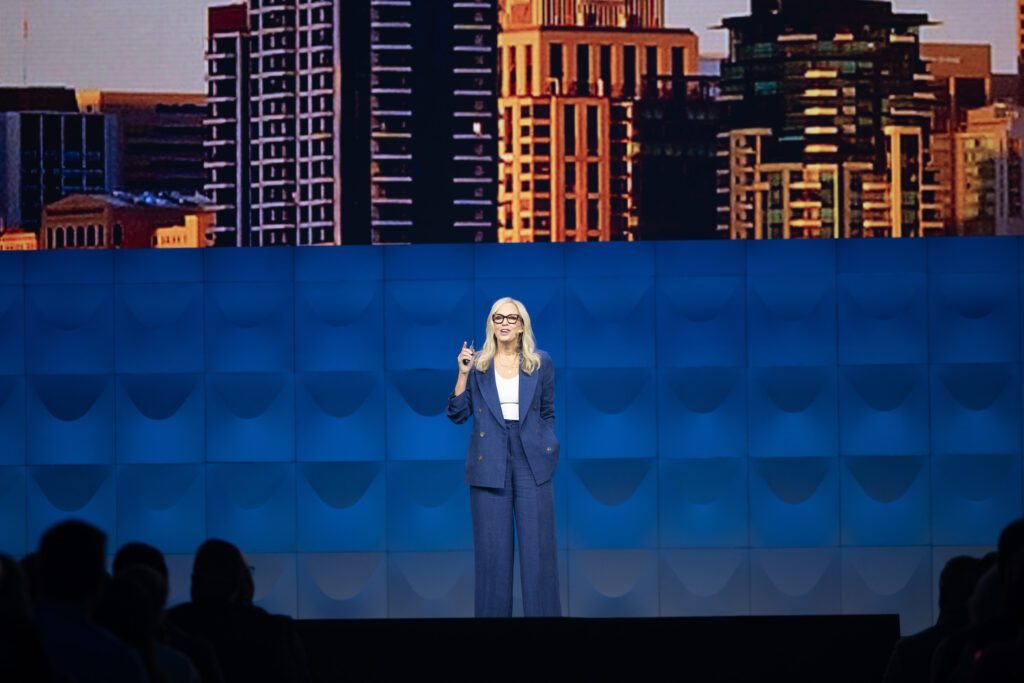




 Network
Network